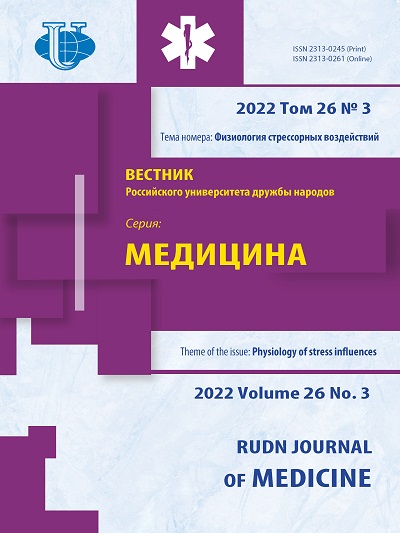Abstract
Relevance. Currently, the problem of regeneration of damaged skin, including of a burn nature, remains relevant. The work describes the results of the study of the redox intensity and of the psychoemotional status of rats in thermal skin injury. The aim of the study is an experimental study of the redox intensity and of the psychoemotional status of rats in burn skin injury. Materials and Methods. The study was conducted on nonlinear male rats of average weight 250 grams for 6-8 months. To assess psychoemotional status, studies were carried out using standard psychophysiological methods: «Open Field», «Elevated cruciform maze», «Suok Test» and «Porsolt.» The intensity of redox processes in the hypothalamic and prefrontal regions of the brain was assessed by determining the intensity of lipid peroxidation and catalase activity. The activity of lipid peroxidation was determined by the initial content of malonic dialdehyde, as well as by the rate of spontaneous and ascorbic peroxidation of lipids. Results and Discussion. During the study, it was found that burn damage to the skin was accompanied by an increase in the concentration of TBC-active products of lipid peroxidation in the hypothalamic and prefrontal regions of the brain of rats, which resulted in the development of oxidative stress. Burn injury initiated peroxidation processes in the studied areas of the brain, the most pronounced in the early period of the burn process (on days 2-4), with varying degrees decreasing in the following periods (on days 7, 10). The results of the assessment of the psychoemotional status of animals in burn skin injury in standard behavioral tests confirm the involvement of the nervous system in response to stress, the reflex activity of which under stressful conditions manifests itself in a change in behavioral reactions. In the conditions of burn damage to the skin, signs of an alarming-depressive state, in particular disorientation in space, suppression of the psychoemotional state, and a change in the nature of behavioral reactions were noted. Conclusion. Thus, the revealed changes in the intensity of redox processes and the peculiarities of the psychoemotional status of rats in burn skin damage are the result of biochemical and functional disorders of the brain, activated during protective and adaptation reactions in burn injury.















